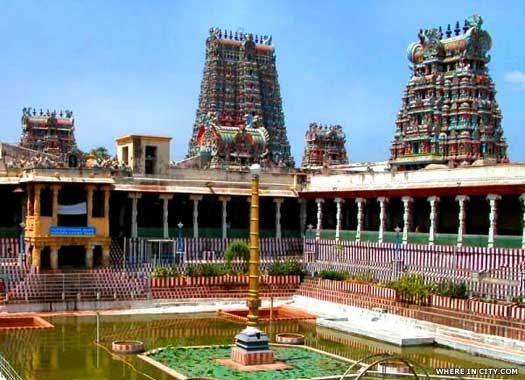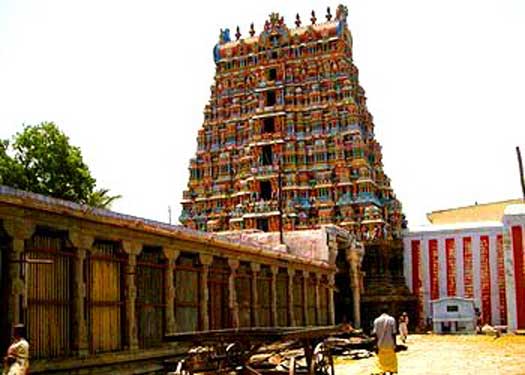The Pändyas / Pandyas
The Pandyas ruled regions in southern India which now lie in the state of Tamil Nadu, existing there alongside other dynasties such as the Cholas, the Cheras, the Pallavas, etc. The early Pandyas were reduced to obscurity by the Kalabhras, until their revival in the sixth century AD. They were again subdued by the Cholas in the ninth century, only to rise once more in the twelfth century.
During their long existence as a recognisable people, the Pandyas enjoyed diplomatic ties with the Roman republic and empire (apparently dating as far back as 550 BC, when Rome was still an occupied Etruscan kingdom), the Greeks, the Chinese, the PtolemyEgyptians, etc. The Pandyan kingdom was also independent during the Mauryan rule of northern India, and had friendly ties with them. Marco Polo made mention of the Pandyan kingdom as one of the richest he had ever seen, as did Megasthenes in his work the Indika, and the Chinese traveller Yu Huan.
In the fourteenth century, the kingdom met its end after an invasion by the Islamic Delhi sultanate. The Pandyas subsequently became a part of the Vijayanagar empire. The word Pandya is derived from the Tamil word, ‘Pandi’ which means the ‘bull', and considered a symbol of masculinity , strength and valour by the early Tamils. The early Pandyas are also said to have taken part in the Kurukshetra war, on the side of the victorious Pandavas.
During the battle, Malayadwaja apparently wounds the mighty Dronacharya, the teacher of both the Pandavas and the Kauravas, and who fights on the side of the Kauravas. Malayadwaja goes further and takes on Drona's son, Ashwathama, in a duel.
Malayadwaja's daughter is Meenakshi, after whom the famous temple of Meenakshi Amman is built in Madurai. The city of Madurai is built around this temple. After this, the Pandyas fall back into obscurity for seven centuries.

Pandya Sangam Period
c.600 BC - c.460 BC
c.600 BC - c.460 BC
Although the period of the Kurukshetra War is semi-legendary in Indian history, the oral and written sources do seem to be remembering real events and leaders, however hazy the view might be. There is nothing more on the Pandyas until they emerge properly into history in the sixth century BC.
By this time they are a recognisable people whose leaders are credited for constructing many beautiful temples in their kingdom (the Meenakshi Amman temple in Madurai, and the Nellaiappar temple in Tirunelveli, for example) and who apparently rule a very prosperous state. Their kingdom is famous for its involvement in the pearl trade, and the arts, poetry and literature all progress under them.
The early Pandya list here is from the Sangam literature and poems.

1327-1345:
Jatavarman Sundara Pandya appeals to Alladin Khiljis, the Deccan viceroy, and General Mallik Kafur for help. Kafur invades and destroys the Pandyan kingdom over the course of two decades, ending Hindu Pandya rule and starting a Mahomedan overlordship from Delhi.
However, Delhi loses power in the Deccan in the fourteenth century and a patchwork of kingdoms and principalities emerges, one of the biggest of which is the Vijaynagar empire, which lies immediately north of the Madurai region. In 1334, Madurai itself becomes an Islamic sultanate which is initially independent.


